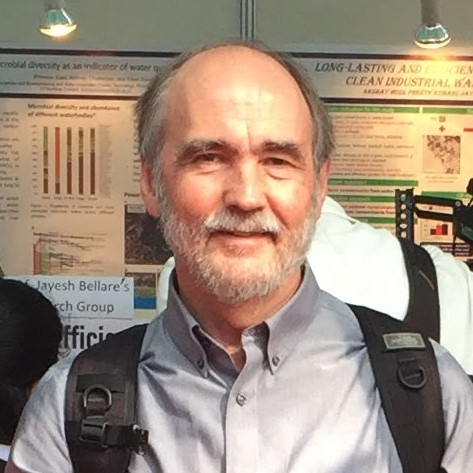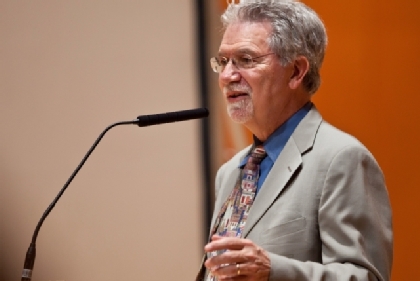Page 9 • (173 results in 0.023 seconds)
-

Aimee Hamilton’s undergraduate course, Religion and Culture: Contemporary Religions of South Asia, gathers for a morning site visit at the Khalsa Gurmat School in Kent. Khalsa Gurmat is a nonprofit school that emphasizes Sikh history, Punjabi language, computing, art and math. The school also functions as…
", cssSelectorAncestor: "#player-1726", swfPath: "/wp-content/themes/plu/library/js/jplayer/jquery.jplayer.swf", supplied: "mp3", useStateClassSkin: true, autoBlur: false, smoothPlayBar: true, keyEnabled: true, remainingDuration: true, volume: 1 }); }); Taking pictures is not allowed in the shrine space of the gurdwara so students are tasked with drawing what they see. This method aims to expand students’ perspectives on sacred space and religious reality. MariHa Casas shows her creation. PLU students participate in
-
May 4th and May 5th Join the Mathematics Department to hear the senior capstone presentations. Student presentations will take place Friday and Saturday. Talks are scheduled in Morken 214 and 216.
Drawings Meghan Gould Art is a central part of many cultures’ rituals and storytelling traditions. One such artistic custom is sand drawing, with groups ranging from northern Africa to India to Oceania incorporating the artwork into their cultural practices. In this paper, we closely examine a particular type of sand drawing from Angola, known as sona, and its inherent graph theoretic properties, specifically as they relate to the properties of a special type of graphs known as Gaussian graphs. We
-

PLU alumnus Brian Lander ‘89 grew up in Washington State’s Tri-Cities. But in early 2020, Lander was far from his childhood home, as he helped meet urgent needs in Northwest Syria. Turkish troops, Syrian and Russian armies, and opposition forces negotiated and battled over resources…
conditions,” he said. “COVID has had a major impact on the communities we serve and our ability to respond. But we’re drawing lessons learned from COVID in the last year to help us plan for the future, as this is likely just the beginning of pandemics.”Study Global Studies at PLUPLU’s Global Studies Program educates students to engage critically and actively with contending perspectives on global issues, their origins, and possible solutions to global problems drawing on methods and perspectives from
-

Professor of Chemistry* | Department of Chemistry | fryhlecb@plu.edu | 253-535-7530 | Craig Fryhle began his career at PLU in 1986 working on organic synthesis targets related to natural products and potential mechanism-based enzyme inhibitors of the shikimic acid pathway. He has mentored undergraduate researchers in these areas who have gone on to careers in academia, industry and other pursuits.
with local colleagues, Gordon Research Conferences, and ACS meetings. He has been using a tablet for projected real-time drawing in class since 2009, and started using clickers in 2007. Supported by an NSF grant with Dean Waldow in 1994 that brought one of the first web and email servers to PLU and the first computational chemistry resources to the Chemistry Department, he started The Organic Journal Club in 1998, an email discussion forum that helped students learn by writing and explaining
Area of Emphasis/Expertise -

We are grateful to the family of Jeanette Pilgrim, who donated her personal harpsichord to the Music Department. This unique instrument constructed by Kenneth Bakeman in 1980 has two keyboards and a pedal division with painted motifs on the lid and soundboard. Instruments built by…
there may be very few pieces of music composed for a harpsichord with pedals, the value of a harpsichord as a practice instrument cannot be overlooked. Before widespread use of electricity, practicing on an organ in a drafty church in winter really wasn’t very fun or practical. Harpsichords, a stringed instrument requiring no moving air, could live comfortably indoors in a parlor or drawing room, allowing ample time for practice. PLU students will be able to play this harpsichord to master their
-

Chair’s report on scholarships and activities By Robert P. Ericksen, Kurt Mayer Chair of Holocaust Studies Bob Ericksen received several notable invitations this year, including an opportunity to give the annual Raul Hilberg Memorial Lecture at the University of Vermont. Hilberg spent his entire career…
scholarship. These talks, intended to be published as a collection of essays, allowed each speaker to review his or her own place in the field. Bob spoke on “Pastors and Professors: Assessing Complicity and Unfolding Complexity,” drawing upon his recent book, Complicity in the Holocaust: Churches and Universities in Nazi Germany (Cambridge, 2012). Ericksen’s connections with the U.S. Holocaust Memorial Museum in Washington, DC continued in 2012. He is Chair of the Committee on Ethics, Religion and the
-

At PLU, you can test your math skills in the classroom, but you can also showcase your problem-solving prowess outside the classroom! This year, a three-person PLU student team finished in the top five of the Interdisciplinary Contest in Modeling , an international contest where…
Technology, where, this year Duffy, Madeline and Matthew listened to the Vines for six hours straight and danced through the halls into the wee hours of the morning. A pivotal moment came early on the third day. After drawing up blueprints for an algorithm—which Matthew said they “lovingly” called the Optimal Node Interconnected Objectives Network, or ONION for short—they waited and watched as the code they had staked their entire paper on refused to run. They put sad music on and took a nap. When they
-

Each year, around 10,000 teams participate in The Interdisciplinary Contest in Modeling, an international contest where teams of undergrad students have 99 hours straight to create a mathematical model addressing a complex social or scientific issue. Each year, the top awards go to large technical…
Vines for six hours straight and danced through the halls into the wee hours of the morning. A pivotal moment came early on the third day. After drawing up blueprints for an algorithm—which Matthew said they “lovingly” called the Optimal Node Interconnected Objectives Network, or ONION for short—they waited and watched as the code they had staked their entire paper on refused to run. They put sad music on and took a nap. When they woke, they realized they had enough evidence to continue their
-

In the world of science, significant discoveries can come in tiny packages. Picture being able to make and change things so small they’re nearly invisible. That’s where colloidal semiconductor nanocrystals shine. These super small wonders are made in solution and grown to have different sizes…
any career and help with applying to graduate schools.”MAKING SCIENCE HAPPEN: “I am preparing our selenium precursor by reducing our selenium powder with 1-dodecanethiol,” said Smith. (PLU Photo / Sy Bean)DRAWING CHEMISTRY: “Dr. Munro and myself are discussing the phase identification of ZnSe nanocrystals characterizations. Differentiating the cubic and wurtzite lattice X-ray diffraction patterns that this material can form,” stated Smith. (PLU Photo / Sy Bean)“This summer allowed me to experience
-

The PLU capstone project is a meaningful culmination of a student’s academic journey at PLU. It offers students a chance to embrace complexity and ask tough questions. In a display of remembrance and advocacy, Nasier Ford ’24, La’akea Ane ’24, and Jesse Canda ’24 opened…
reminded them of his lasting impact on their lives. This tribute set the tone for a presentation to raise awareness and provide coping mechanisms for mental health challenges within PLU’s athletic and student communities. Drawing from personal experiences and research, Ford, Ane, and Canda covered the complexities of mental health issues within the context of student athletes’ demanding schedules and societal pressures. The presentation detailed a student-athlete football player’s schedule to show the
Do you have any feedback for us? If so, feel free to use our Feedback Form.


